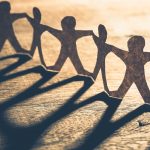Workforce development strategies across communities attempt to enhance economic stability and prosperity. Common objectives are to identify labour market trends and opportunities and help jobseekers efficiently re-enter the workforce.
Workforce development also works by equipping workers with the skills necessary for a specific type of job. The purpose of workforce planning is to ensure that an organization has an adequate supply of people with the skills, knowledge and experience required to achieve their goals and objectives.
So, what’s missing from our current approach to workforce development?
Low-wage workers can experience personal instability that leads to overall business and community instability. Connecting workforce development strategies with poverty-reduction strategies can help build sustainable communities in which everyone can live well.
As an employer, the environment of daily instability creates pain for both the employee and the business. For individuals trying to move from instability to stability, obtaining and retaining work can pose many challenges that can not be overcome by traditional service approaches. Instability is another form of diversity in the workforce.
The influence of societal lenses
Generally, we tend to create strategies, programs and/or services from our own societal lens – how we perceive situations or view the world. Race, culture, religion and economic status are just some of the factors that influence a person’s view of the world. Our societal lens can influence our unconscious bias of another person’s behaviors and/or decision making.
When we create similar strategies for different driving forces, we miss engaging people who were raised differently than us and may think differently than we do. As a result, when people don’t respond the same way we would, and/or are not driven the same way we are, we may think of this as ‘unmotivated’ and often wonder why they aren’t engaged. Employers are no exception and may find that they expect certain behaviours and/or patterns in thinking from their employees that are like their own.
We know that 54% of low-wage workers live in unstable environments and that employee turnover is one of the biggest drains on business productivity and profits. Additionally, recruiting and training is very expensive – it takes an average of five months for a new employee to reach full potential.
We also know that people bring the hidden rules of economic class in which they were raised. This means that if someone was raised in instability and is now working for someone who was raised in long-term stability, there can be a disconnect in their rapport and mutual understanding. For example, an employee consistently struggling to make ends meet who is living in unstable environments is frequently driven by the need to solve immediate problems, leaving little time left for future planning. Yet someone with a societal lens of long-term stability expects a mindset of “future planning mode.” This makes for disagreements about time management. There are many other similar disconnects when we compare the environments of stability versus instability and how decisions are made.
Expecting employees to have the same societal lens (and use the same hidden rules) as the employer is the same as asking the employer to have the same societal lens as the employee. It isn’t likely to happen, and frustration results on both ends when raised in different economic realities. Businesses and schools use the hidden rules of middle class – this means that often employers, social services and teachers default to the expectations and perspectives of that lens. Neither is right nor wrong, but simply put, how can an employee truly succeed if they’ve never been taught in a mutually respectful way about the hidden rules of their employment?
A holistic model
The Bridges out of Poverty model from the company Aha! Process helps employers, organizations and individuals understand, address and reduce poverty together in a comprehensive way. It offers a comprehensive approach to understanding the dynamics that cause and maintain generational poverty, from the individual to the systemic level. The model focuses on economic class to understand your own societal lens, while also gaining insight into the lenses of others. The framework is then used to develop programs and strategies that improve relationships at the front-line level, improve outcomes at the organizational level and improve systems at the community level.
Bridges out of Poverty is a powerful tool for community change. By engaging all classes and multiple sectors in establishing a common understanding and language, the Bridges framework can help employers uncover solutions in supporting employees to stabilize their lives and, ultimately, keep the job, which stabilizes their business.
Watch out for a second article from Suzie Johnson-Smith this fall to learn more about how Bridges out of Poverty is working to help clients stabilize their lives for a better quality of life in the long term.
Want the best of CareerWise delivered to your inbox each week? Subscribe to our popular CareerWise Weekly newsletter to receive top news and views in career development every Tuesday.





